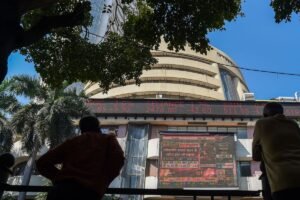In the competitive world of cryptocurrency, there is one exchange that has truly climbed its way to success against all odds. Meet Backpack, a revolutionary crypto exchange and wallet launched in 2022 by a team of determined founders. Their journey has been far from easy, but their perseverance and innovative approach have propelled them to new heights.
Backpack hit $27.5 billion in total trading volume during its beta phase, a staggering achievement for a relatively new exchange.
However, their path to success was not without its challenges. In September 2022, FTX, a major investor, co-led Backpack’s strategic investment round with a whopping $20 million. But less than two months later, disaster struck as FTX collapsed, causing Backpack to lose 80% of their operating capital.
“We spent all this time building this protocol and it was like an on-the-ground knock-out and [we] needed to be resuscitated back to life,” revealed Armani Ferrante, co-founder of Backpack and the NFT collection Mad Lads, in an interview with TechCrunch.
Not only did Backpack lose their investment money and partner, but FTX’s collapse also ushered in a crypto bear market. Despite these setbacks, Backpack persevered, thanks to the support of their loyal followers.
“It’s a combination of product, community, social good will and timing that brought in an incredible group of people,” Ferrante shared. “Since then it’s taken on a life of its own.”
After a month and a few days, Backpack’s beta phase, or “Pre Season Phase 1,” came to an end on Monday. During this period, the exchange traded over $27.5 billion in total volume and filled 259 million orders at an average rate of 5,000 per minute. Additionally, they added 252,000 KYC’d users, bringing their total to 560,000 users.
According to data from CoinGecko, Backpack’s trading volume peaked at $3.66 billion on Sunday and currently has a 24-hour volume of approximately $2.8 billion.
“We have caught lightning in a bottle in a weird way, where people just started talking about Backpack as this new up-and-coming exchange,” Ferrante commented. “They saw the potential of a next generation exchange, learning from the mistakes of previous exchanges.”
One of the major lessons that Backpack learned from FTX was the importance of design. Unlike FTX, Backpack’s exchange system was designed to ensure that balances were controlled by independent entities, or nodes. This way, every transaction was checked and validated by multiple entities, reducing the risk of a single point of failure.
“The collapse of FTX was horrible, but looking at the bright side, it’s like a phoenix rising from the ashes,” Ferrante reflected. “It forced the industry to mature, and we have had to step up our game to solve the hard problems that weren’t being addressed before.”
But Backpack is not just an exchange. They are also building their crypto wallet and platform for xNFTs, a new token standard on the Solana blockchain. These tokens are similar to NFTs but also function as a platform for web3 applications.
The name Backpack was inspired by popular MMO games like World of Warcraft and Runescape, where players are given backpacks to store and manage their inventory. “In a normal wallet, you have cards, cash, and coins, but a backpack can have everything, not just money. We see it as a much more dynamic version of a wallet,” Ferrante explained.
One of Backpack’s biggest draws is their NFT collection, Mad Lads. With a trading floor price of approximately 172 SOL, or $34,400, Mad Lads is a prime example of the potential growth and value of xNFTs. “We wanted to build a product for our community and make their life in crypto better,” Ferrante shared.
But Mad Lads is not the only xNFT out there. Ferrante cited examples like Solana Monkey Business, which has an xNFT that gives holders access to a regular newsletter directly in their wallet.
Although FTX may have fallen as an investor, Placeholder VC has stepped in and led Backpack’s Series A round, raising $17 million at a valuation of $120 million. Backpack is now expanding globally and is present in 11 US states, Dubai, and the Asia-Pacific region. Their goal is to reach 95% of the world’s GDP by the end of 2024, “compliantly serving customers,” as Ferrante stated.
“Going forward, it’s all about execution for Backpack on many different fronts,” Ferrante said. “Product distribution is top of mind, as we aim to be available in every country around the world.”
“It’s one of those crazy things where it’s a winner takes all market,” Ferrante added. “We want to seize the moment and make the most out of everything.”








